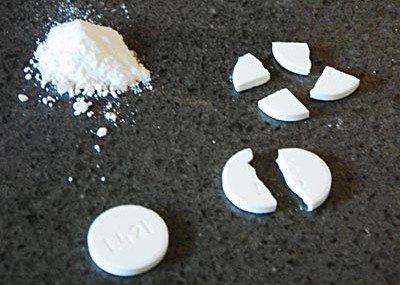Aug 29, 2023Steps to balance: Step 1: Separate the half-reactions that undergo oxidation and reduction. Oxidation: I − I 2. This is the oxidation half because the oxidation state changes from -1 on the left side to 0 on the right side. This indicates a gain in electrons. Reduction: MnO − 4 Mn2 +.
Redox reactions of different Fe species in aquatic environments (Shaked… | Download Scientific Diagram
Aug 24, 2023Consider the following redox reaction: Fe (s) + Cl 2 (g) – FeCl 2 (aq) Which of the following statements is FALSE? C12 (g) is oxidized during this reaction. Fe (s) – Fe2+ (aq) + 2e is the oxidation half reaction. Two moles of electrons are exchanged per every one mole of Fe (s) being oxidized. Fe (s) is oxidized during this reaction.
Source Image: pharmaguideline.com
Download Image
In Equation 4.5.3, for example, the total number of electrons lost by aluminum is equal to the total number gained by oxygen: electrons lost = 4Alatoms × 3e − lost Alatom = 12e − lost. electrons gained = 6Oatoms × 2e − gained Oatom = 12e − gained. The same pattern is seen in all oxidation-reduction reactions: the number of electrons

Source Image: chegg.com
Download Image
Direct Synthesis of α-Sulfenylated Ketones under Electrochemical Conditions | The Journal of Organic Chemistry 2. Oxidation is an increase in oxidation number. Reduction is a decrease in oxidation number. Consider the reaction below between elemental iron and copper sulfate: Fe +CuSO4 → FeSO4 + Cu Fe + CuSO 4 → FeSO 4 + Cu. In the course of the reaction, the oxidation number of Fe Fe increases from zero to +2 + 2.

Source Image: en.wikipedia.org
Download Image
Complete The Statements About The Redox Reaction Below.
2. Oxidation is an increase in oxidation number. Reduction is a decrease in oxidation number. Consider the reaction below between elemental iron and copper sulfate: Fe +CuSO4 → FeSO4 + Cu Fe + CuSO 4 → FeSO 4 + Cu. In the course of the reaction, the oxidation number of Fe Fe increases from zero to +2 + 2. The Half-Reaction Method of Balancing Redox Equations . A powerful technique for balancing oxidation-reduction equations involves dividing these reactions into separate oxidation and reduction half-reactions. We then balance the half-reactions, one at a time, and combine them so that electrons are neither created nor destroyed in the reaction.
Photorespiration – Wikipedia
Aug 29, 2023An oxidation-reduction (redox) reaction is a type of chemical reaction that involves a transfer of electrons between two species. An oxidation-reduction reaction is any chemical reaction in which the oxidation number of a molecule, atom, or ion changes by gaining or losing an electron. Redox reactions are common and vital to some of the basic The Alka Seltzer Reaction – Middle School Chemical Engineering For Girls

Source Image: sites.tufts.edu
Download Image
Los Alamos Team Unlocks the Potential of Spin-Exchange in Quantum Dots Aug 29, 2023An oxidation-reduction (redox) reaction is a type of chemical reaction that involves a transfer of electrons between two species. An oxidation-reduction reaction is any chemical reaction in which the oxidation number of a molecule, atom, or ion changes by gaining or losing an electron. Redox reactions are common and vital to some of the basic

Source Image: hpcwire.com
Download Image
Redox reactions of different Fe species in aquatic environments (Shaked… | Download Scientific Diagram Aug 29, 2023Steps to balance: Step 1: Separate the half-reactions that undergo oxidation and reduction. Oxidation: I − I 2. This is the oxidation half because the oxidation state changes from -1 on the left side to 0 on the right side. This indicates a gain in electrons. Reduction: MnO − 4 Mn2 +.

Source Image: researchgate.net
Download Image
Direct Synthesis of α-Sulfenylated Ketones under Electrochemical Conditions | The Journal of Organic Chemistry In Equation 4.5.3, for example, the total number of electrons lost by aluminum is equal to the total number gained by oxygen: electrons lost = 4Alatoms × 3e − lost Alatom = 12e − lost. electrons gained = 6Oatoms × 2e − gained Oatom = 12e − gained. The same pattern is seen in all oxidation-reduction reactions: the number of electrons

Source Image: pubs.acs.org
Download Image
Unit 9 Electrochemistry Notes (answers) Aug 29, 2023Solution. Step 1: Separate the half-reactions. By searching for the reduction potential, one can find two separate reactions: Cu+(aq) +e− → Cu(s) and. Fe3+(aq) + 3e− → Fe(s) The copper reaction has a higher potential and thus is being reduced. Iron is being oxidized so the half-reaction should be flipped. This yields:
Source Image: doctortang.com
Download Image
High-Resolution Microscopical Studies of Contact Killing Mechanisms on Copper-Based Surfaces | ACS Applied Materials & Interfaces 2. Oxidation is an increase in oxidation number. Reduction is a decrease in oxidation number. Consider the reaction below between elemental iron and copper sulfate: Fe +CuSO4 → FeSO4 + Cu Fe + CuSO 4 → FeSO 4 + Cu. In the course of the reaction, the oxidation number of Fe Fe increases from zero to +2 + 2.

Source Image: pubs.acs.org
Download Image
High-Volume Manufacturing Facility in Malaysia – OpenGov Asia The Half-Reaction Method of Balancing Redox Equations . A powerful technique for balancing oxidation-reduction equations involves dividing these reactions into separate oxidation and reduction half-reactions. We then balance the half-reactions, one at a time, and combine them so that electrons are neither created nor destroyed in the reaction.

Source Image: opengovasia.com
Download Image
Los Alamos Team Unlocks the Potential of Spin-Exchange in Quantum Dots
High-Volume Manufacturing Facility in Malaysia – OpenGov Asia Aug 24, 2023Consider the following redox reaction: Fe (s) + Cl 2 (g) – FeCl 2 (aq) Which of the following statements is FALSE? C12 (g) is oxidized during this reaction. Fe (s) – Fe2+ (aq) + 2e is the oxidation half reaction. Two moles of electrons are exchanged per every one mole of Fe (s) being oxidized. Fe (s) is oxidized during this reaction.
Direct Synthesis of α-Sulfenylated Ketones under Electrochemical Conditions | The Journal of Organic Chemistry High-Resolution Microscopical Studies of Contact Killing Mechanisms on Copper-Based Surfaces | ACS Applied Materials & Interfaces Aug 29, 2023Solution. Step 1: Separate the half-reactions. By searching for the reduction potential, one can find two separate reactions: Cu+(aq) +e− → Cu(s) and. Fe3+(aq) + 3e− → Fe(s) The copper reaction has a higher potential and thus is being reduced. Iron is being oxidized so the half-reaction should be flipped. This yields: